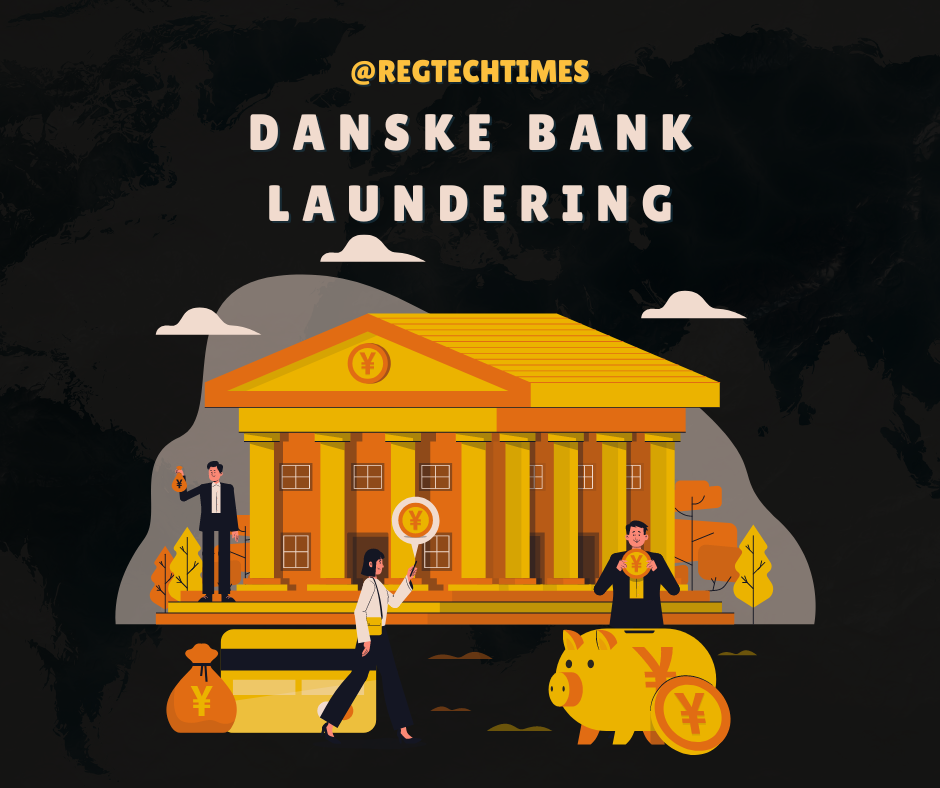What is the Danske Bank?
The largest financial institution in Denmark, Danske Bank A/S primarily focuses on offering banking services in the Nordic area and has operations in sixteen nations. In addition to banking services, it also offers its clients real estate, leasing, asset management, life insurance, and pension benefits services. There are an estimated 2.7 million individual consumers, 211,000 small and medium-sized company clients, and 2,000 corporate and institutional clients working with Danske Bank. The Financial Supervisory Authority (“FSA”) of Denmark granted the Danske Bank a license and regarded the bank as one of six Danish financial firms of systemic importance to the country- meaning that it was seen as a crucial piece of Denmark’s economy and financial stability.
The Danske-Sampo Merger
Danske Bank merged with the Finnish Sampo bank in 2007, due to which it acquired many branches in other countries- including one in Estonia. The branch in question was governed by both the Financial Supervisory Authority of Estonia and the Financial Supervisory Authority of Denmark. After the branch was exposed to have been the epicenter of many criminal and money laundering activities, both authorities began to condemn each other for the lack of proper monitoring or accountability for the branch and were subsequently criticized by the European Banking Authority for neglecting their roles as financial watchdogs.
Money Laundering allegations against the Danske Bank
The incident involving Danske Bank is the most substantial money laundering case in recent history, with an estimated $236 billion in laundered funds being routed through its Estonian office. The bank’s credibility and responsibilities were questioned by both its clients as well as financial regulatory boards. The main issue is the lack of communication between the Bank’s Executive Board and headquarters in Copenhagen and the Estonian branch’s management, which was later exposed to be extremely corrupt. The Executive Board was also accused of being negligent as it did not enforce proper communication routes or monitor whether its branches were functioning in a legal capacity or not.
Case Study: The Unfolding of Events that led to the Danske Bank’s downfall
On February 1st, 2007, Danske Bank finalized the $4.57 billion acquisition of AS Sampo Bank, which included the ownership of a branch in Tallinn, Estonia. This branch would later end up serving as the hub of one of Europe’s most significant money-laundering operations. The branch was utilized for questionable activities, including tax evasion and possible military and terror funding, with billions of rules passing through the branch each month. The Russian central bank notified Danske about its concerns regarding the branch’s activities soon after it acquired control of the branch. As it was established that Danske was aware of the risks associated with the branch, the bank soon landed in trouble with the Estonian financial regulators for failing to adequately account for compliance risks and potential issues and not deploying know-your-customer (KYC) regulations.
Danske bank also came under fire for not focusing enough on integrating AS Sampo Bank branches into the Danske Bank system during the 2008 Global Financial Crisis (GFC), which caused discord in communications between the branch and headquarters. The Danish company’s Estonian unit continued to operate mostly independently and under its own management, with not much involvement from the board. In fact, Danske’s intentions to move its Baltic branches onto its primary IT platform fell through due to cost concerns, which had a negative impact on their AML checks. The majority of papers at the Estonian branch were written in Russian or Estonian due to the background of the majority of their clients. This practice reportedly caused further hindrances in any attempt at control by the Copenhagen headquarters.
Thomas Borgen was named Head of International Banking Activities in 2009, and a large part of his duties included personally managing the Baltic branches. In his objectives for 2010, Borgen pointed out that he wanted to see an increase in the number of nonresident clients, who primarily came from Russian and former Soviet countries. According to reports from the Estonian branch, the Danske Bank Executive Board noticed suspicious behavior in the branch’s activities after this statement.
However, the Board was unconcerned about the unusually large Russian deposits as the Estonian branch’s earnings from overseas accounts showed a significant increase, which added to their profits. The Tallinn branch’s currency exchange activities went largely unnoticed until the Estonian media exposed the link between a nonresident bank account at the branch and an ongoing money laundering scheme.
The Estonian branch’s non-resident portfolio kept increasing steadily from 2010 to 2015, and from 2007 to 2013, the percentage of non-resident accounts’ earnings that were profitable before credit losses were observed to have increased from 49% to 99% of the branch’s overall profits- a number that could no longer be ignored. Corporate clients, mainly from Russia, the UK, and the British Virgin Islands, made up the bulk of the non-resident clientele. Despite accounting for just 0.5% of the bank’s assets, the Estonian branch still contributed 11% to Danske’s overall earnings before taxes, a fact that was starkly visible in its 2011 accounts.
The Danish Financial Supervisory Authority (FSA) also informed Danske’s compliance group about its lack of improvement in risks related to AML in the Estonian branch in 2012. The claims came after internal auditors at Danske reported less than satisfactory AML regulation at the Estonian branch to the Executive Board.
Borgen left his former role as Head of International Banking Activities to take on the role of Danske Bank’s CEO in 2012. According to Danish legislation, each bank must appoint a person responsible for implementing and overseeing anti-money laundering measures- a position that Danske Bank neglected to fill until November 2013. Due to its concerns regarding the unnatural increase in Danske Bank’s non-residential clients, and the claims regarding their suspicious activities, major banks like JPMorgan pulled out from serving as the Estonian branch’s correspondent bank for dollars. In a 2013 meeting between the management of the Estonian branch and Danske’s top management, Borgen voiced a refusal to reduce nonresident accounts despite caution from correspondent banks, including JPMorgan, Bank of America, and Deutsche Bank, due to the number of profits that the foreign accounts brought to the table.
Responding to money-laundering concerns, the Danske Business Banking group conducted a study on the Estonian branch in 2013, in which they were able to uncover various indicators of money laundering. First off, there were significantly more transactions among nonresident accounts than usual. Second, the branch produced an unnatural surplus of profit, with many of its customer’s activities showing indifference to major changes in inflation and deflation. Last but not least, a large portion of the branch’s clients were denoted as intermediates in the form of unregulated organizations. In a meeting with the Executive Board, the group also raised concerns about the reputational risk of aiding “capital flight” from Russia due to its negative monetary policies. Still, Borgen dismissed these worries as being unrelated to nonresident accounts in the Baltic branches.
The Estonian branch’s operations were blown wide open in 2014 when Howard Wilkinson, an executive at the branch, published a report regarding suspicious nonresident accounts that were transferring substantial quantities of money through the bank, frequently from Russian rubles to dollars. Wilkinson originally emailed the letter to members of the Executive Board as well as the bank’s internal audit unit, the Baltic banking group, and the Compliance division at Danske. The report mentioned several high-profile clients, many of whom were routing millions of dollars through the branch per day.
The internal audit team at Danske, building on Wilkinson’s proof of inconsistent information regarding the names of the customers of the Estonian branch, produced a scathing assessment of the nonresident client companies indicating suspicious activities. In spite of these worries, CEO Borgen stated during a 2014 Board meeting that he was hesitant to take decisive action since abandoning the offshore business plan may “seriously damage any sales price”. In response, the Estonian FSA imposed regulatory fines on Danske in 2015. The Danish FSA followed suit when inspections in 2016 revealed that the bank was extremely non-compliant with AML measures and other risk controls.
Due to the significant quantities of Russian money moving via nonresident accounts at the Estonian office of Danske Bank, Deutsche Bank and Bank of America, who were associated with Danske, also took action. They discontinued their banking agreements with the Danish bank in 2015. Following intense pressure from AML regulators, Danske finalized the shutdown of its nonresident business at the Estonian branch in 2016- almost two years after Wilkinson published the whistleblower report.
However, the damage to Danske’s reputation was already done. The allegations of Danske’s involvement with Russian criminals began gaining traction, and several reports were published in the following couple of years. The Danish Public Prosecutor for Serious Economic and International Crime, the U.S. Department of Justice, the Danish FSA, and the Danish law firm Bruun and Hjejle all launched investigations into the Estonian branch’s suspected involvement in Russian money laundering as a result.
Danske published the research results from Bruun and Hjejle’s analysis on September 19, 2018. Due to insufficient supervision and money laundering checks at the bank, it was estimated that around $236 billion in nonresident money was allegedly moved through the Estonian branch between 2007 to 2015- constituting one of Europe’s largest money laundering operations to date. Following the allegations, the CEO Thomas Borgen and the chairman of the board Ole Anderson resigned, and ten former workers at the Tallinn branch were held by Estonian authorities on suspicion of intentionally facilitating money laundering with Russian clients.
Following these evaluations, Danske pledged to donate the $225 million in nonresident account profits to a group that fights financial crime in the hopes of making up for its role in the scheme and trying to salvage its reputation. Millions of dollars were also spent by the bank on enhancing IT systems, expanding the AML team, educating more staff members in AML and whistleblowing, and ceasing all its banking activities in the Baltic states.
Conclusion
The Danish Danske bank came under fire in 2018 after a decade-long scheme that saw the blatant misuse of one of its Estonian branches exposed to the public. Once regarded as a critical piece of the Danish economy and one of the most reliable banks in Europe, the allegations caused a serious blow to the bank’s reputation. Though the bank itself was not involved n the transgressions caused by the Estonian branch, which operated somewhat independently, it was heavily criticized for the lack of communication between the headquarter and the branch and its flagrant carelessness when it came to deploying AML measures and ensuring that they were being followed. This led to almost $236 billion dollars of black money being directed by the bank over the years, as well as the Danske Bank directly going against its moral aim and obligations to its clients. It is yet to be seen if the bank will be able to rebuild its reputation in the years to come and put this massive blunder behind them.




